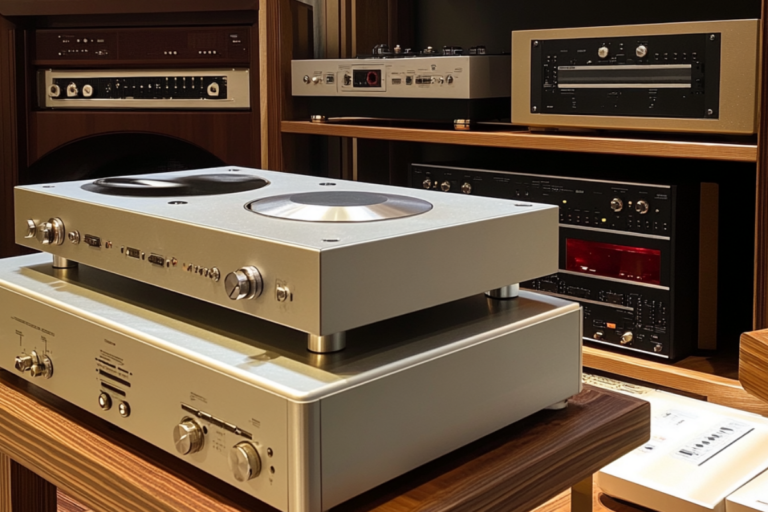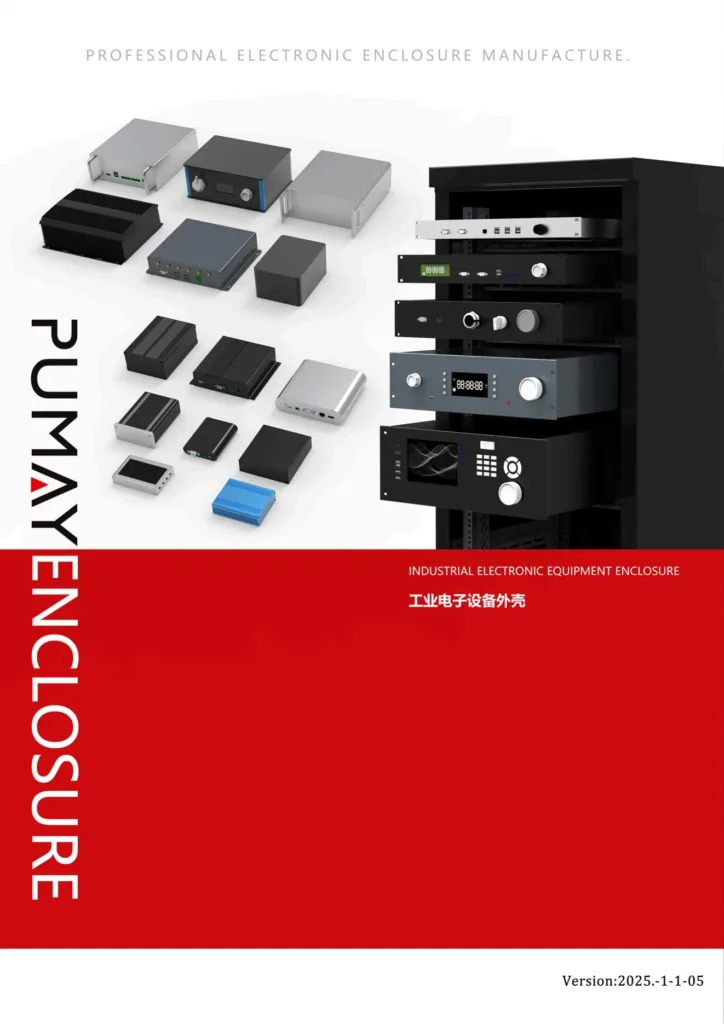In high-performance audio equipment1, the enclosure is more than just a protective shell—it plays a critical role in sound quality, heat management, and electromagnetic shielding. Aluminum alloy enclosures are the preferred choice for amplifier housings due to their superior thermal conductivity, durability, and ability to reduce interference.
Here’s why aluminum amplifier enclosures are essential for ensuring optimal audio performance2 and long-term reliability.
1. Superior Heat Dissipation
Why It Matters:
Audio amplifiers generate significant heat during operation, especially class A or high-power amplifiers3. Excess heat can degrade performance, shorten component lifespan, and cause distortion.
Aluminum’s Advantage:
- High thermal conductivity4 (235 W/mK) ensures rapid heat dissipation compared to steel or plastic.
- Integrated heatsink designs can be easily incorporated into aluminum enclosures to improve passive cooling.
Application Example:\
In high-end amplifiers, finned aluminum enclosures5 help maintain stable temperatures, ensuring consistent audio quality even under heavy load.
2. Electromagnetic Interference (EMI) Shielding
Why It Matters:
Audio equipment is highly sensitive to electromagnetic interference (EMI)6 and radio-frequency interference (RFI), which can introduce unwanted noise and distortion into the sound signal.
Aluminum’s Advantage:
- Acts as a natural Faraday cage7, blocking external interference.
- Seamless construction reduces EMI leakage, especially in professional audio applications.
- Enhanced shielding protects internal circuits from nearby devices such as wireless routers or mobile phones.
Application Example:\
Professional recording studios often choose aluminum-cased amplifiers to ensure pure signal transmission8 without noise contamination.
3. Structural Strength and Durability
Why It Matters:
Audio amplifiers, especially those used in live performances or mobile setups, must endure physical stress, impacts, and vibrations.
Aluminum’s Advantage:
- Lightweight yet strong9, aluminum enclosures provide excellent protection without adding unnecessary bulk.
- Corrosion-resistant10, making it suitable for both indoor and outdoor use.
- Anodized or powder-coated surfaces11 offer additional protection and a premium appearance.
Application Example:\
Portable amplifiers with aluminum enclosures are more durable and easier to transport, ensuring reliability on tour or at events.
4. Aesthetic Appeal and Customization
Why It Matters:
In high-end audio equipment, appearance matters as much as performance. An attractive, well-designed enclosure enhances product value and user experience.
Aluminum’s Advantage:
- Easily customizable with anodized finishes, laser engraving, and custom colors.
- Smooth, high-quality surface for a modern, sleek design.
- Modular designs allow integration of custom features such as cooling vents, LED indicators, and control panels.
Application Example:\
Luxury audio brands use brushed aluminum finishes for a minimalist, professional look that appeals to audiophiles.
5. Acoustic Performance Improvement
Why It Matters:
The enclosure material can impact the amplifier’s acoustic performance by reducing unwanted vibrations and resonance.
Aluminum’s Advantage:
- High damping factor reduces enclosure vibrations, preventing sound distortion.
- Rigid structure minimizes internal resonance, ensuring a cleaner audio output.
- Tightly sealed enclosures eliminate air leakage, maintaining consistent sound pressure.
Application Example:\
In subwoofer amplifiers, aluminum housings help reduce cabinet vibrations, delivering tighter, distortion-free bass.
Summary of Aluminum Alloy Enclosure Benefits
| Feature | Benefit |
|---|---|
| Thermal Management | Prevents overheating, improving reliability and performance |
| EMI/RFI Shielding | Reduces noise and distortion for pure audio output |
| Structural Durability | Lightweight, corrosion-resistant, and impact-resistant |
| Aesthetic Appeal | Customizable, modern design with premium finishes |
| Acoustic Performance | Reduces resonance and vibrations for clearer sound |
The End
Aluminum alloy enclosures are indispensable in audio amplifiers due to their unique combination of thermal efficiency, durability, EMI shielding, and aesthetic flexibility. Whether for high-end home audio systems, professional studio amplifiers, or portable sound equipment, aluminum enclosures help deliver better sound quality, longer lifespan, and a premium user experience.
Exploring this link will provide insights into how audio equipment enhances sound quality and performance. ↩
Discover techniques and tips for achieving the best audio performance, ensuring your sound system delivers high-quality output. ↩
Understanding class A amplifiers can help you manage heat and improve performance in audio systems. ↩
Learn how high thermal conductivity materials enhance audio amplifier performance and longevity. ↩
Discover how finned aluminum enclosures can optimize cooling and audio quality in amplifiers. ↩
Understanding EMI is crucial for audio professionals to mitigate noise and ensure high-quality sound. Explore this link for in-depth insights. ↩
Learn how a natural Faraday cage can protect sensitive audio equipment from interference, enhancing sound quality. This resource provides valuable information. ↩
Discover the significance of pure signal transmission in audio systems to achieve the best sound quality. This link offers essential knowledge. ↩
Discover how lightweight yet strong materials enhance the performance and durability of audio amplifiers, making them ideal for live events. ↩
Learn why corrosion-resistant materials are crucial for the longevity and reliability of audio equipment in various environments. ↩
Explore the benefits of anodized or powder-coated surfaces for audio amplifiers, including protection and aesthetic appeal. ↩





